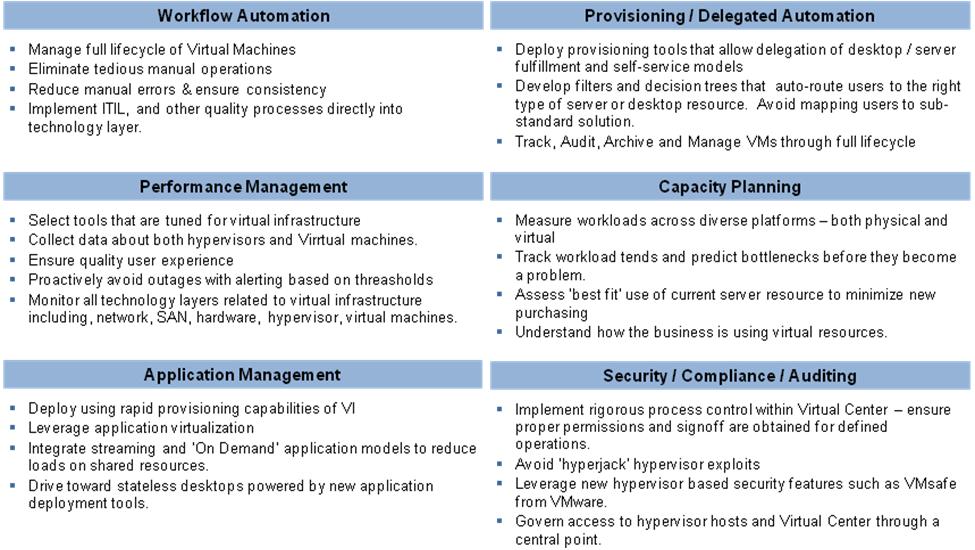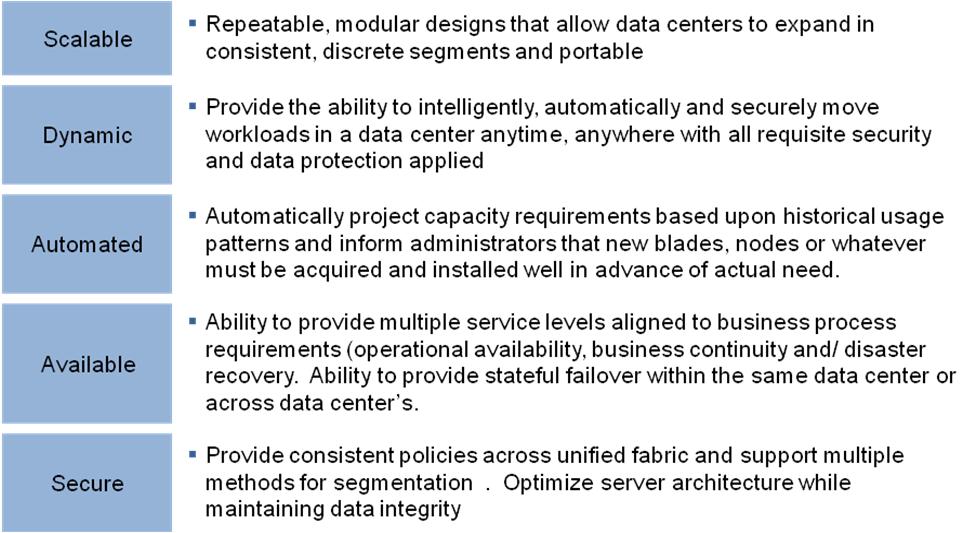As an ex-CTO of a global Financial Services company in New York City, I worked through Y2K, the dot-com bubble, and the emergence of x86-based server virtualization. Our first introduction to server based virtualization occurred in early 2001 after consolidating several data centers into a single global data center. As a result of the consolidations, we were in need of finding ways to reduce the environmental impact that the consolidations introduced or face expansion of the production data center. To address these environmental issues we adopted a virtualization strategy for our test / dev environments late that same year.
While not highly scalable, the benefits we realized were fairly significant and based on our early successes, we quickly evaluated data center ready hypervisors when they were introduced in late 2003/4. We became the first financial institution to leverage virtualization in a production data center in early 2005.
Many companies today are faced with some of the same environmental and business challenges that I faced back in 2003/4. However, unlike several years ago when there was a single vendor solution, the virtualization landscape has become more crowded and complex, the TCO / ROI more elusive and the focus on "quick wins" even more important, especially in today's economic climate.
Virtualization 1.0 (2004 - 2008)
Prior to 2005, virtualization was used more as a desktop tool for IT staff to run multiple desktop operating systems or as an inexpensive way to contain test / development environments. In 2004 a production-ready hypervisor based solution emerged and organizations began to evaluate and its ability for supporting production workloads. Early implementations and success stories increased the awareness and adoption of virtualization. However, VIRTERA believes that we are still in the early stages of the virtualization lifecycle and refers to the current state of as v 1.0 for several reasons.
Firstly, virtualization to date has been more about server containment and not server consolidation. Organizations are still faced with supporting and maintaining the same number of servers as they had prior to virtualizing their environment. Moreover, they have now introduced other operational and management challenges that didn't exist prior to virtualization.
Secondly, virtualization has been viewed by many organizations, and the industry as a whole, as a tactical solution as opposed to a strategic initiative to transform the way in which IT services are delivered to the business.
Lastly, it was a product centric solution with little or no documentation for success from a management and operational point of view.
As a result much of the software was never installed and the promised ROI never realized.
Virtualization 2.0 (2009 - 2011)
For those organizations that have successfully navigated the choppy waters and deployed a solid virtual infrastructure, many are left with the question of "What do I do now that I have virtualized?" or "So what, I've virtualized. How can I take this to the next level?"
VIRTERA solution architects are helping clients develop a strategy to create further infrastructure transparency through the use of virtualization technologies. The end result being The Next Generation Data Center.
There are several key functional areas that have recently been introduced which will help clients get there including:
- I/O (fabric) virtualization
- Storage virtualization, and
- Systems and Operations Management including provisioning / delegated automation.
I/O virtualization is the consolidation of Ethernet and Fiber Channel networks. This is an integral piece of virtualization and will enable further mobility and agility of the IT infrastructure. Benefits include:
- Flexible, dedicated I/O paths for virtual machines
- Reduced number of cable connections and adapters
- Fewer network switches and therefore fewer points of management, and
- Consistent policies and security profiles across your network fabric.
Companies that are leading the charge in this space include 3Leaf Systems, Xsigo, Brocade and Cisco with their Nexus line of switches.
Storage virtualization will allow organizations to simplify the management of their infrastructure and consolidate multi-vendor physical storage systems into what appears to be a single storage resource that is centrally managed. This is yet another key fundamental building block to drive asset utilization of your storage array and provide greater flexibility and transportability of virtual machines across storage platforms or geographically across data centers.
- Increased storage utilization (today's typical storage system utilization is between 20% and 30%)
- Simplified management of heterogeneous storage systems
- Improved application availability (insulates host applications from changes to physical storage infrastructure)
- Delivers significant efficiencies, cost savings and power / cooling benefits.
Companies that are leading the way in this space include IBM, Hitachi, EMC, NetApp and Data Core.
Over the next few months a few lines will be drawn in the sand as to where all of these player fall.
The final piece to the puzzle towards the Next Generation Data Center is Systems and Operations Management. There are several companies within each of these categories that have capable products.

Next Generation Data Center
The demands on today's data center are growing and the cost associated for delivering these services is ever increasing. The major drivers for this are:
1. The install base of servers is expected to grow 16% or 41-43 million servers by 2010.
2. Higher load densities will contribute to higher energy costs which are currently increasing at 16% per year.
3. Energy consumption per server is growing by 9% as growth in performance pushes demand for energy.
The diagram below depicts the breakdown of average IT cash costs at a typical company (by percent).

So what are the characteristics for the Next Generation Data Center:

Conclusion
Virtualization as an industry is maturing and the next few years look to be the most formative as manufacturers combine forces to deliver on the promise of virtualization.
Cisco and EMC / VMware have strengthened their relationship as they look to drive the design and architecture for the Next Generation data center. They each own substantial market share in the data center along with the core infrastructure components (including Management with EMC SMARTS) to create a comprehensive solution for customers. Cisco continues to deliver virtualization capabilities with their Nexus line of switches and recent announcement of their Unified Computing System.
Microsoft, with the upcoming delivery of Hyper-V R2 candidate is looking to give clients an alternative hypervisor platform. Their Systems Center suite of products also provides a mechanism for managing a physical / virtual IT environment based on multi-vendor hypervisor technologies. Several recent announcements by Microsoft and Citrix have pointed to a strengthened partnership to address the virtual desktop space, a platform that Microsoft and Citrix have owned for a long time.
So, the next few months look to be interesting with all of these announcements and alliances beginning to gel and become clearer.
---



 Technorati
Technorati Del.icio.us
Del.icio.us Slashdot
Slashdot Digg
Digg twitter
twitter










